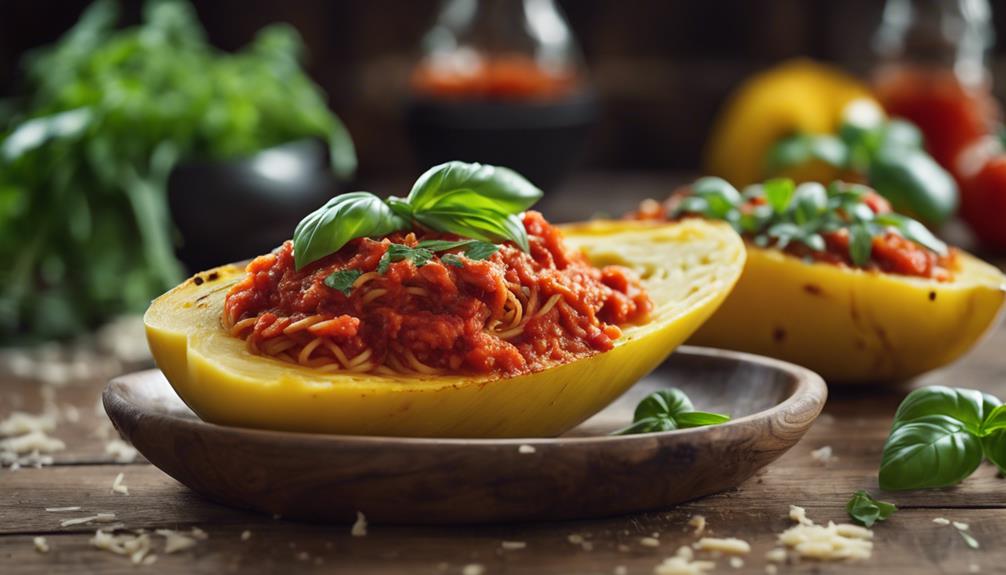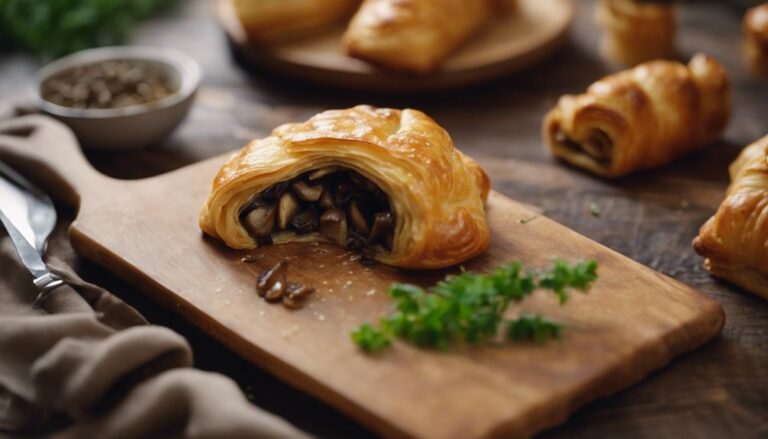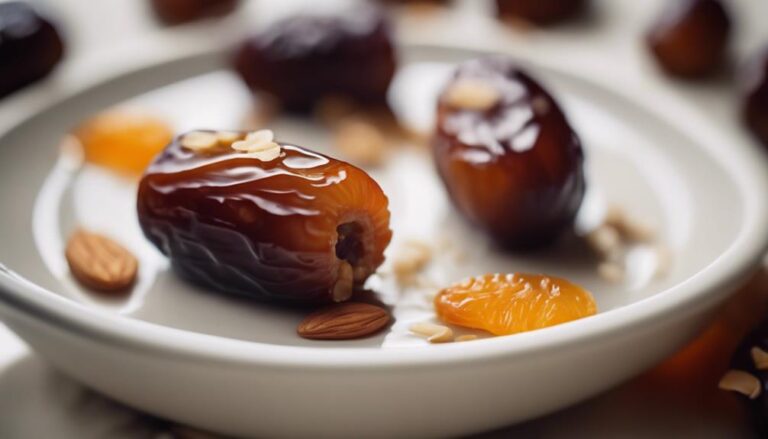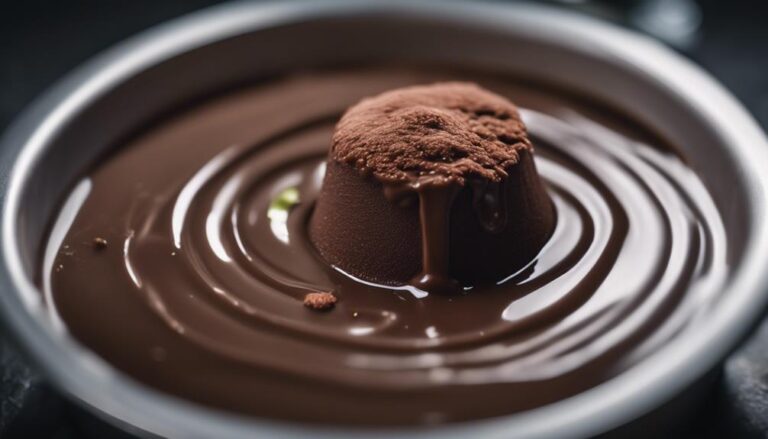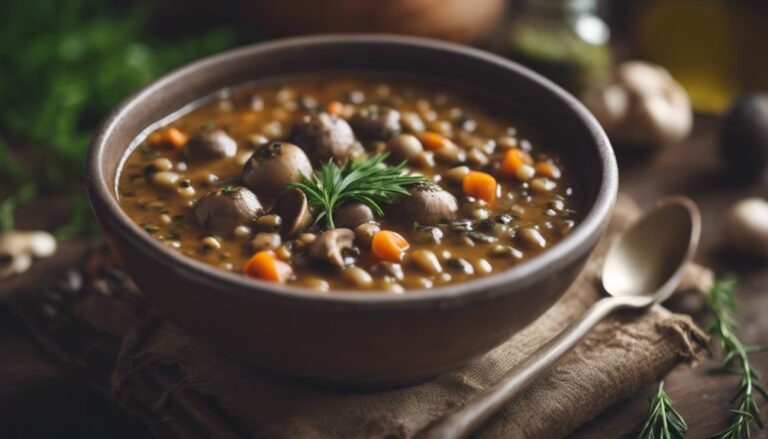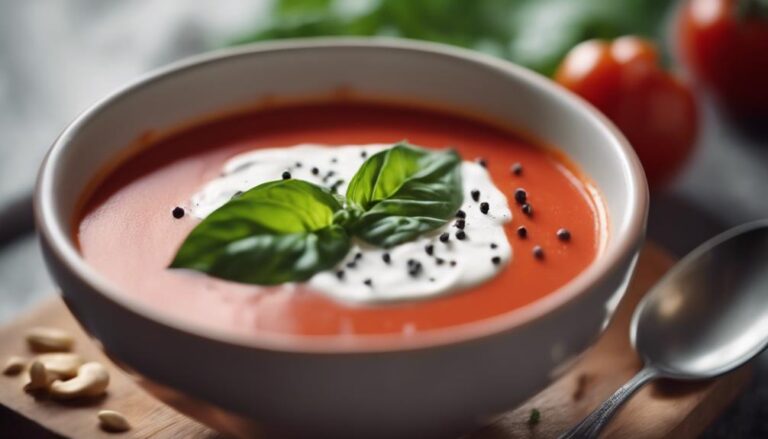Sous Vide Spaghetti Squash With Tomato Basil Sauce
Sous vide spaghetti squash with tomato basil sauce guarantees your culinary experience. By cooking the squash in a sealed bag at precise temperatures, natural sweetness and nutrients are preserved. This method guarantees consistent results and perfect texture distribution. The tomato basil sauce complements the squash's flavors, resulting in a harmonious blend. If you're curious about the detailed benefits and culinary finesse of this dish, there's more to uncover.
What You Will Learn Here
- Sous vide cooking preserves spaghetti squash's natural sweetness and nutrients.
- Precise temperature control ensures consistent and even cooking of the squash.
- Tomato basil sauce complements the squash's flavors, creating a harmonious dish.
- Retains moisture, resulting in a tender and flavorful spaghetti squash.
- Minimal effort required for a wholesome and delicious meal with rich flavors.
Squash's Origins
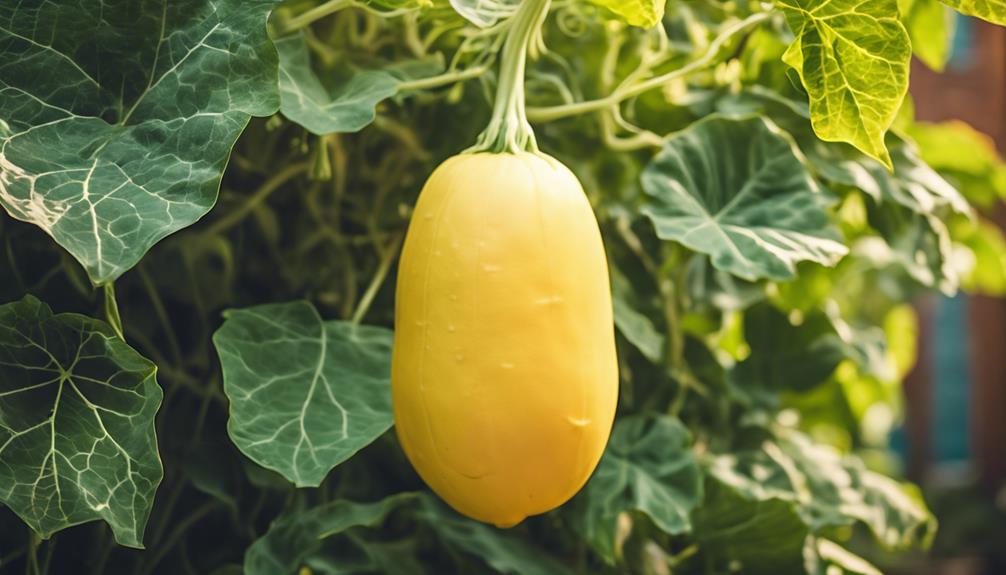
Spaghetti squash's historical roots trace back to the Americas, where Native American tribes initially cultivated this unique winter squash variety.
The evolution of squash over time reflects the diverse cultural influences shaping its development, from traditional farming practices to modern culinary applications.
Understanding the historical context sheds light on the significance of squash in various cultures and its journey to becoming a versatile ingredient in today's cuisine.
Squash's Historical Roots
Belonging to the Cucurbitaceae family, spaghetti squash, known as vegetable spaghetti, has its origins rooted in Central America. This region served as the birthplace for the cultivation of squash, offering a diverse range of species that would later spread worldwide. The introduction of spaghetti squash to Europe in the 19th century marked the beginning of its journey to becoming a beloved culinary ingredient. Its popularity soared as people embraced its unique texture and health benefits. Below is a table that showcases the key points about the historical roots of spaghetti squash:
| Squash's Historical Roots | |
|---|---|
| Origin | Central America |
| Introduction to Europe | 19th century |
| Popularity | Healthy pasta alternative |
| Nutritional Benefits | Rich in vitamins A and C, fiber |
Evolution of Squash
Originating in Mesoamerica over 10,000 years ago, squash has a rich history intertwined with ancient civilizations and global exploration. The cultivation of squash by civilizations such as the Aztecs and Mayans marked the beginning of its evolution. Through selective breeding and cultivation techniques, various types of squash, like spaghetti squash, were developed over time.
Native Americans played a pivotal role in introducing squash plants to European explorers, leading to their widespread distribution worldwide. The evolution of squash showcases the adaptability and versatility of this crop, which has become a staple ingredient in cuisines globally. Appreciated for its unique flavors, textures, and nutritional benefits, squash continues to captivate culinary enthusiasts and researchers alike with its rich and diverse history.
Cultures and Squash
With a history spanning over 10,000 years, indigenous cultures in the Americas have long been cultivating various types of squash, including spaghetti squash, as a fundamental part of their diets and agricultural practices.
Native American tribes such as the Cherokee and Iroquois revered squash as a staple crop that provided essential nutrients and sustained their communities. The cultivation and consumption of squash were deeply embedded in the traditions and agricultural techniques of these cultures.
Squash, with its diverse varieties and adaptability to different climates, played a vital role in the development of early agricultural systems in the Americas. Its introduction to European settlers by Native Americans marked a significant exchange of knowledge and resources, highlighting the importance of squash as a valuable food source in the cultural exchange between indigenous peoples and newcomers.
Squash's Fresh Produce
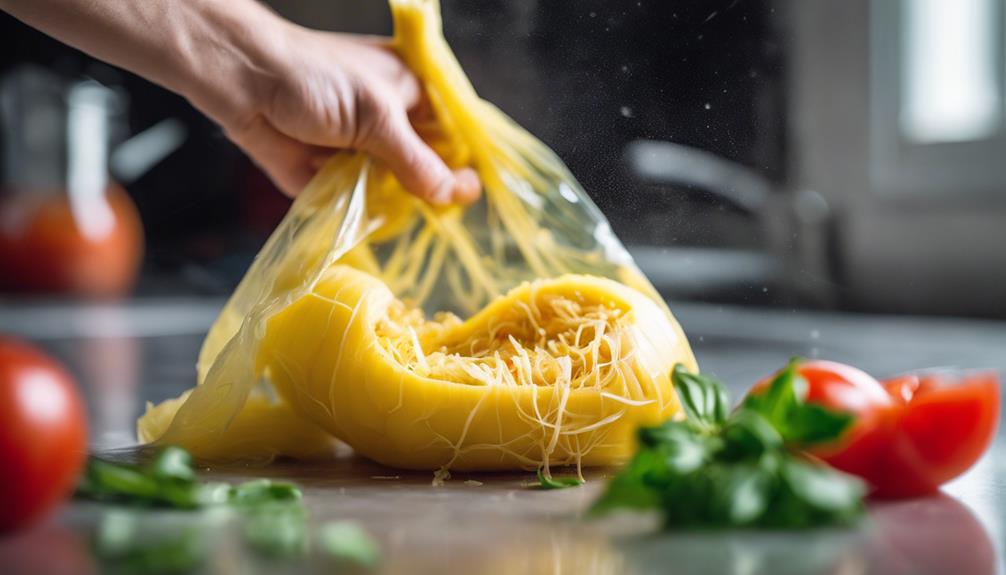
Fresh produce of squash, particularly spaghetti squash, offers a wealth of nutritional benefits and culinary versatility. Spaghetti squash isn't only a low-calorie vegetable, with just 42 calories per cup, but it also provides essential vitamins such as C and B6, along with fiber and manganese. Its versatility shines through as it can serve as a nutritious, low-carb alternative to pasta. When cooked, the flesh of spaghetti squash transforms into delicate strands resembling traditional spaghetti, making it a popular choice for those seeking a pasta substitute. The mild, slightly sweet flavor of spaghetti squash complements various sauces and seasonings, enhancing the overall dining experience.
- Spaghetti squash is low in calories, with only 42 calories per cup.
- It's a good source of vitamins C and B6, fiber, and manganese.
- The vegetable is a versatile ingredient, serving as a low-carb alternative to pasta.
- The flesh resembles spaghetti strands when cooked, making it a popular pasta substitute.
- Spaghetti squash pairs well with a variety of sauces and seasonings, adding to its culinary appeal.
Tasty Squash Variations
Explore the diverse culinary possibilities of squash with dishes like Squash Noodles With Pesto, Spaghetti Squash Carbonara Recipe, and Squash Stuffed With Quinoa. Each variation offers a unique blend of flavors and textures, showcasing the versatility of this nutritious vegetable.
Experimenting with these tasty squash variations can elevate your cooking repertoire and inspire new culinary creations.
Squash Noodles With Pesto
For those seeking a flavorful and nutritious pasta alternative, consider incorporating squash noodles with pesto into your culinary repertoire. Pesto, a classic sauce rich in fresh basil, garlic, pine nuts, Parmesan cheese, and olive oil, pairs exceptionally well with squash noodles.
Here are some reasons why this combination is a must-try:
- Pesto is packed with essential nutrients and antioxidants.
- Squash noodles offer a low-carb and vitamin-rich alternative to traditional pasta.
- The vibrant green color of pesto adds visual appeal to the dish.
- Tossing squash noodles with pesto creates a satisfying and flavorful meal option.
- The olive oil in pesto provides healthy fats that are beneficial for heart health and overall well-being.
Spaghetti Squash Carbonara Recipe
Toss aside traditional pasta notions and embrace a delectable twist with the Spaghetti Squash Carbonara Recipe, offering a flavorful low-carb alternative that melds creamy textures with savory elements. This innovative dish combines the unique strands of cooked spaghetti squash with a rich, egg-based sauce, creating a satisfying meal that's both delicious and health-conscious.
Here are some key points about the spaghetti squash carbonara recipe:
- Incorporates bacon, eggs, Parmesan cheese, and black pepper.
- Provides a rich and satisfying flavor profile.
- Offers a unique texture from the spaghetti squash strands.
- Serves as a popular variation of traditional carbonara.
- Appeals to those seeking healthier pasta alternatives.
Squash Stuffed With Quinoa
To enhance your culinary repertoire with a nutritious twist, consider delving into the domain of Squash Stuffed With Quinoa, a flavorful and wholesome dish that marries the robustness of squash with the protein-rich goodness of quinoa. Quinoa stands out as a complete protein source, providing all nine essential amino acids. The combination of quinoa and squash offers a balanced meal rich in complex carbohydrates and protein. This dish is a low-carb alternative filled with fiber, promoting digestive health and satiety. By blending the flavors of quinoa, squash, and delicious seasonings, you create a satisfying and nutritious meal.
- Quinoa is a complete protein source, containing all nine essential amino acids.
- Squash provides a low-carb alternative to traditional pasta, perfect for a healthy meal.
- Combining squash with quinoa creates a balanced dish with complex carbohydrates and protein.
- Stuffed squash recipe is rich in fiber, promoting digestive health and satiety.
- Flavors of quinoa, squash, and seasonings come together for a satisfying and nutritious meal.
Sous Vide Technique Benefits
When utilizing the sous vide technique for cooking spaghetti squash, you benefit from precise temperature control, ensuring ideal doneness.
The even distribution of heat throughout the squash results in a consistent texture, enhancing the overall eating experience.
This method also helps to retain the natural flavors and moisture of the squash, leading to a juicy and flavorful outcome.
Precise Temperature Control
Achieving precise temperature control through sous vide cooking is essential for ensuring consistent and superior results in your culinary creations.
Sous vide cooking allows you to set the exact temperature at which your ingredients will cook, ensuring they're neither undercooked nor overcooked. This precision is crucial for achieving the desired texture, doneness, and flavors in your dishes.
By maintaining a constant temperature throughout the cooking process, sous vide cooking helps to preserve the integrity of the ingredients and prevent any risk of overcooking. This level of control is particularly beneficial when working with delicate foods or when aiming for specific textures.
Even Cooking Distribution
Guaranteeing even cooking distribution is a fundamental benefit of the sous vide technique when preparing spaghetti squash.
By immersing the squash in a precisely controlled water bath, sous vide guarantees that heat is evenly distributed, cooking the entire squash consistently.
This method is particularly advantageous for spaghetti squash due to its fibrous nature, allowing for a thorough and uniform cooking process from the outer layers to the core.
The sous vide technique maintains the integrity of the squash's texture, preventing overcooking or undercooking certain parts.
As a result, the spaghetti squash retains its shape and firmness while becoming tender and flavorful.
Sous vide cooking provides a reliable way to achieve perfectly cooked spaghetti squash, showcasing its natural taste and texture.
Retains Natural Flavors
How does the sous vide technique enhance the natural flavors of spaghetti squash during the cooking process? Sous vide cooking retains the natural flavors of ingredients by vacuum-sealing them in a precise temperature-controlled environment. The table below illustrates how this method helps preserve the inherent flavors of spaghetti squash, resulting in a more intense and enjoyable eating experience.
| Benefits of Sous Vide for Spaghetti Squash |
|---|
| Retains natural sweetness and nuttiness |
| Preserves nutrients |
| Enhances taste and texture |
| Intensifies flavors |
| Allows flavors to develop fully |
Final Thoughts
In the domain of sous vide cooking, the union of spaghetti squash and tomato basil sauce culminates in a harmonious blend of flavors and textures that elevate this dish to a culinary delight. The tomato sauce, with its rich umami notes and herbaceous undertones, acts as a perfect companion to the mild sweetness of the spaghetti squash. Through the sous vide method, the spaghetti squash retains its natural flavors and gains a tender, almost buttery consistency that perfectly complements the vibrant tomato basil sauce.
As you savor the final dish, you not only experience a symphony of flavors but also benefit from the retained nutrients and moisture in the spaghetti squash, thanks to the gentle sous vide cooking process. The convenience of sous vide cooking further enhances the overall appeal of this recipe, allowing you to prepare a wholesome and delicious meal with minimal effort.
Frequently Asked Questions
Do You Have to Cut Spaghetti Squash in Half Before Cooking It?
You must cut spaghetti squash in half before cooking it. This process guarantees even cooking, aids in strand development, prevents excess water accumulation, and allows for easy seasoning. Halving the squash optimizes flavor infusion and simplifies flesh removal post-cooking.
Why Is My Spaghetti Squash Soggy?
If your spaghetti squash has a soggy texture, it might be due to excess moisture. To improve consistency, consider properly draining cooked squash, avoiding overcrowding during cooking, and opting for baking or roasting methods for a firmer outcome.
Why Is My Spaghetti Squash so Hard to Cut Open?
To make cutting a spaghetti squash easier, make sure you have a sharp knife and a stable cutting board. Piercing the squash first and applying pressure will help slice through its tough skin and dense flesh more effectively.
Can You Spaghetti Squash Raw?
You can eat spaghetti squash raw, but cooking it alters texture and taste to a large extent. Roasting enhances flavor depth and sweetness, while boiling can make it watery. Experiment with both methods to find your preferred squash experience.
Conclusion
To sum up, utilizing the sous vide technique to cook spaghetti squash with tomato basil sauce results in a perfectly tender and flavorful dish. By cooking the squash at a precise temperature for an extended period, the natural flavors are enhanced and the texture remains firm yet easily fork-tender.
This method allows for maximum retention of nutrients and guarantees a consistent outcome every time. Elevate your culinary experience with this delicious and nutritious meal.
